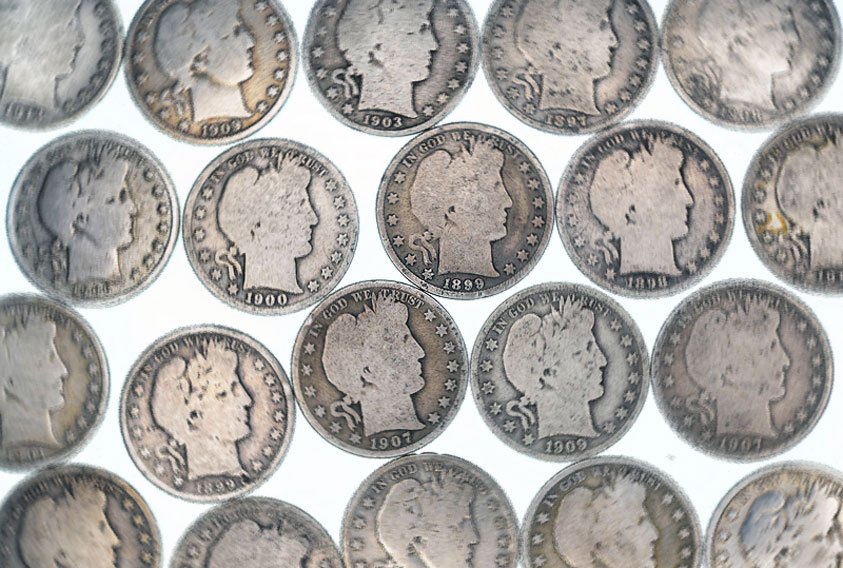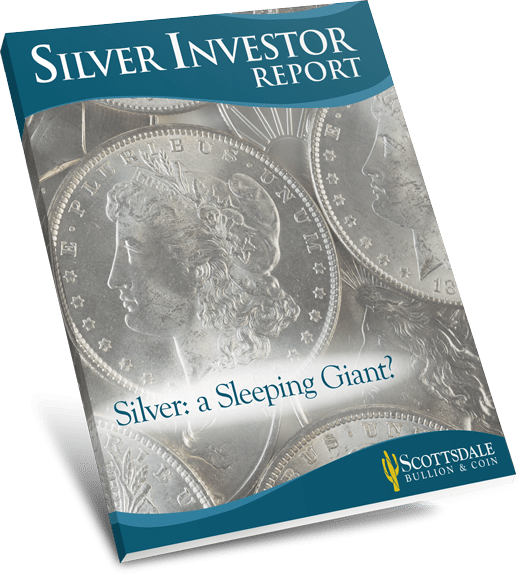 Barber coins represent a curious exception to the rich diversity and celebrated designs of American coinage. These coins were minted for nearly 25 years in three denominations yet didn’t receive much variation in appearance. Ironically, Barber coins were intended to revamp the face of silver coins, but the resulting designs received widespread criticism at their time of release.
Barber coins represent a curious exception to the rich diversity and celebrated designs of American coinage. These coins were minted for nearly 25 years in three denominations yet didn’t receive much variation in appearance. Ironically, Barber coins were intended to revamp the face of silver coins, but the resulting designs received widespread criticism at their time of release.
This peculiar history has given Barber coins a distinct reputation and numismatic appeal among coin collectors and investors. Understanding the unique history, precious metals contents, and types of Barber coins can give investors the insights they need to determine the investment merit of this coinage.
Barber Coin Specs
| Types | Dime, Quarter, Half-Dollar |
| Purity | .90 Silver |
| Finish | Proof & Circulated |
| IRA Eligible | Not IRA Approved |
Why are they called barber coins?
Barber coins are named after Charles E. Barber, the US Mint’s Chief Engraver, who was tasked with giving the country’s silver coinage a new face. Barber had the idea to hold a contest among well-known engravers, sculptors, and other artists to broaden the Mint’s options and generate fresh ideas. The competition failed to produce any designs deemed worthwhile which led mint director Edward O. Leech to request suggestions directly from Barber. After a few initial rejections, Barber’s design was approved by Mint leaders and Congress. The final design was minted on dimes, quarters, and half-dollars which collectively became known as Barber coins.
The History of Barber Coins
By the close of the 19th century, the public was growing increasingly dissatisfied with the look of American coinage. The Seated Liberty design had been featured on the majority of coins for over 50 years. In 1891, the US Mint decided to hold a public competition in the hopes of generating inventive and inspirational designs. Unfortunately, limited funding meant only the winner would receive compensation. This discouraged many talented and well-established artists from taking part.
A panel of renowned coinage experts was put together to review the public’s submissions. Barber and Augustus Saint-Gaudens, designer of the eponymous Double Eagle Gold Coin, disagreed vehemently on the quality and utility of the designs. In the end, all of the 300 submissions were rejected with only two receiving honorable mention. The contest proved to be an abject failure, and the project to give US coinage a new face fell into the lap of Barber who was eager to head the venture.
Leech officially tapped Barber to prep designs for the dime, quarter, and half dollar in 1891. The Mint decided to leave the Morgan Silver Dollar design alone given the coin’s high rate of production at the time. Barber’s initial concepts which largely ignored Leech’s direction were promptly rejected. With a little back and forth, the pair eventually settled on three designs which were struck on pattern coins and presented to President Harrison and his cabinet.
The approved design was immediately slated for production. The motif, which was drawn up for the half-dollar, was simply scaled down for the dime and quarter. Since the law restricted dimes from depicting an eagle, Barber had to develop a separate reverse design. He landed on a minimalist theme with a wreath encompassing the inscription ONE DIME. On January 2, 1892, the Philadelphia Mint began full-scale production of Barber coins.
Criticisms of Barber coins were almost immediate with prominent figures and numismatic publications calling the designs dull, uninspired, and amateur. However, Barber did receive some recognition for the mechanical aspect of the coinage such as the engraving precision, design clarity, and minting functionality. This disparity underscored Barber’s functional and pragmatic approach to coinage rather than an overtly artistic motivation.
After the first year of production, Barber made slight changes to the designs of the half-dollar, quarter, and dime. These modifications were to address some production concerns and improve the appearance of the coinage. Collectors and investors refer to Barber coins in the first year of production as Type I and everything after as Type II. The first design is generally harder to find given its lower mintage.
Types of Barber Coins
The half-dollar, quarter, and dimes that bear Barber’s designs have collectively become known as Barber coins. They’re known for their minimalist and understated design along with their mechanical features which were advanced at the time.
Barber Half-Dollar
The Barber half-dollar enjoyed 23 years of production between 1892 and 1915 with millions being pumped into circulation. The coin has a face value of $0.50, but its 90% silver purity equips it with higher inherent worth. The production of Barber half-dollars was concentrated at the Philadelphia and San Francisco Mint although the Denver and New Orleans Mint also contributed to manufacturing in 1906 and 1909, respectively. Some of the most scarce Barber half-dollars include the 1897-S, 1914, and 1915.
Barber Quarter
The Barber quarter also has a respectable silver fineness of 0.90. It received an extra year of production over its half-dollar counterpart between 1892 and 1916. During this time, the Philadelphia, San Francisco, and New Orleans Mint produced nearly 265 million Barber quarters. This high level of production means only a handful of Barber quarters are considered scarce with even fewer being exceptionally rare. Some key dates include the 1896-S, 1901-S, and 1911-S.
Barber Dime
The Barber dime, also referred to as the “V”, liberty, or Barber nickel, experienced the highest production level among all Barber coins at over half a billion pieces between 1892 and 1916. Similar to other Barber coins, this dime boasts a 90% purity rating. Minting occurred at the Philadelphia, San Francisco, New Orleans, and Denver Mint. Despite the coin’s massive production scale, some versions experienced low mintages at around 500,000 over 25 years. These low-production versions include 1895-O, 1901-S, and 1913-S.
Barber Coins Designs
Obverse
The obverse of the Barber coins depicts a stoic bust of Lady Liberty facing right. Her head is adorned with a Phrygian cap, a small ribbon, and a laurel wreath. On the half-dollar and quarter, the design is encircled by 13 stars and an inscription of IN GOD WE TRUST. Due to space limitations, the Barber dime has UNITED STATES OF AMERICA inscribed around Liberty without any stars. All Barber coins feature the mint date at the bottom of the obverse side.
Reverse
The reverse design of the Barber half-dollar and quarter depicts a heraldic eagle with outstretched wings. A ribbon enclosed in its beak holds the country’s motto: E PLURUBUS UNUM. The eagle is clenching an olive branch and arrows in its talons which represent peace and readiness for war, respectively. Thirteen stars sit above the eagle’s head. UNITED STATES OF AMERICA is emblazoned at the top, and the coin’s denomination QUARTER DOLLOR or QUARTER is inscribed on the bottom. The Barber dime features a more minimalist reverse design. ONE DIME is written in the middle with a decorative wreath surrounding it.
Are Barber coins rare?
The majority of Barber coins aren’t considered rare given their high level of production and widespread circulation. Millions of each iteration were minted over their multiple years of production. However, there are some notable exceptions. The famed 1849 Barber dime from the San Francisco Mint is the rarest version as it saw extremely limited production of 24 coins.
Are Barber coins worth anything?
Yes, Barber coins carry inherent value given their historical significance, high silver purity, and numismatic appeal. However, their sheer volume of production and their circulating nature prevent many of these coins from reaching significantly high values. They represent an accessible and cost-effective investment option for those who don’t mind adding circulating coinage to their collection.


